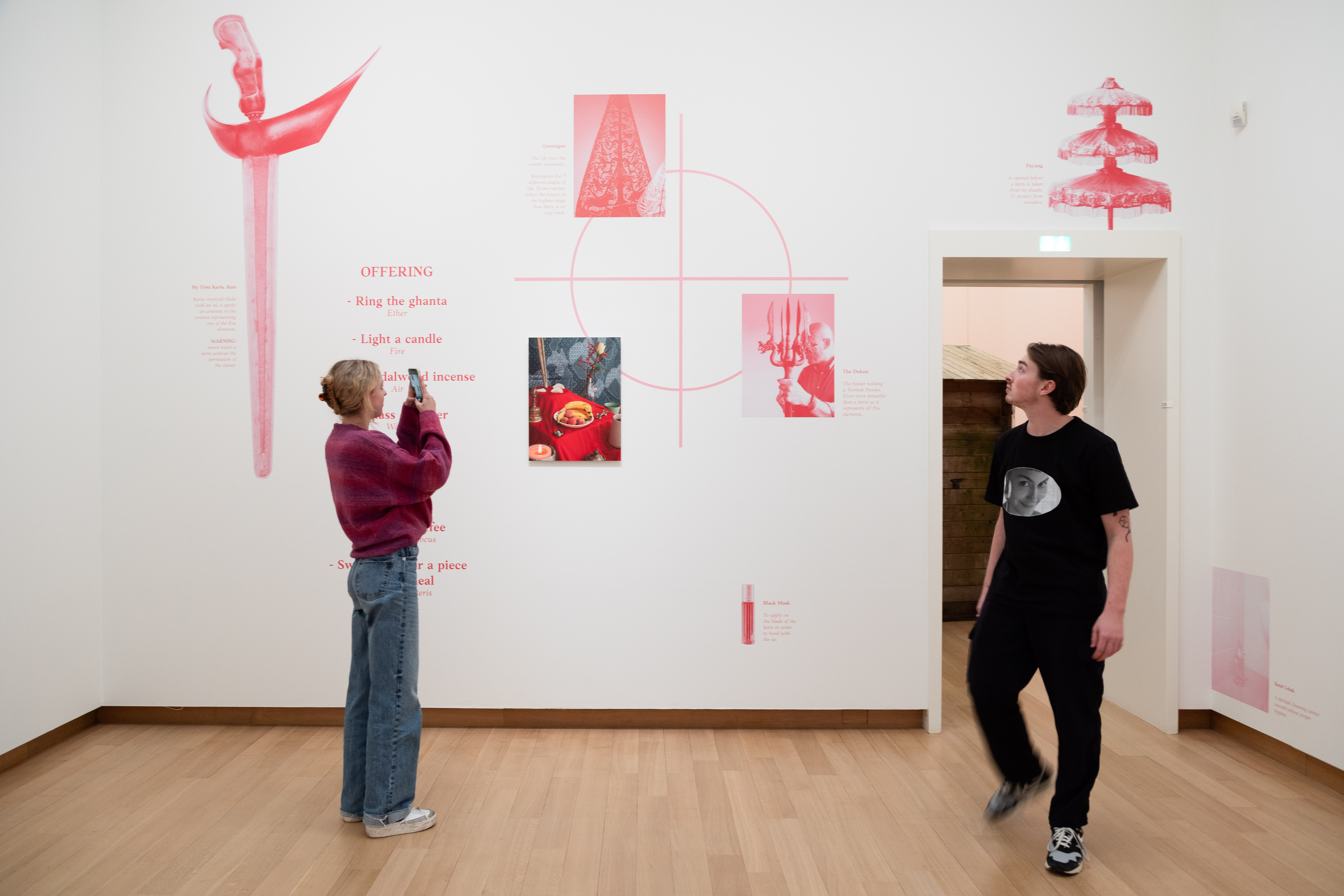The Strange Familiar (2021)
Graduation Project | Royal Academy of Arts, The Hague


As a child I was always fascinated about the dagger on the wall at my grandparents’ place. There was something mysterious about it, something dark. If I would look at it long enough, the snake on the handle would stare back at me all evening. It was said that the dagger could be alive.
When I visited my grandparents a few years ago, we spoke about the past in relation to the Javanese culture. When talking about batik fabrics, my grandfather jumped out of his chair and started changing upstairs. In his Javanese outfit he came down and asked me to take a picture. “Wait!” Grandpa, said suddenly. He quickly went back upstairs and came back with the blade. I asked him, “What is that thing?” To which he responded, “the Keris”.
The Keris started to interest me more and more. A year later I asked my grandfather if I could photograph the object again. To my surprise, my grandfather said he threw it away. “Why?!” I wondered. He told me that the church leader had said that the keris is not compatible with the Christian faith. Not even as a decoration, it could possibly have dark powers. In disbelief I asked him, “But where did you throw it away?” “Roteb!*” He answered quickly.
*Roteb is a waste processing company.



Why do I feel attached,
to a place I have never been?




For the Javanese,
the Keris is not a weapon.
- the Dukun



Ring the ghanta
EtherLight a candle
FireBurn sandalwood incense
AirA glass of water
WaterA cup of dry rice or/and gemstones
Earth
OPTIONAL
A cup of coffee
Extra spiritual focus
Sweet fruits or a piece of your meal
To thank the keris



But grandpa,
if you and grandma
are going to heaven..
where am I going?




The Strange Familiar (2021)
Two years ago my grandfather renounced his keris on the advice of the church leader, because he was told that Christianity could not go together with this Javanese mystic blade. Therefore I decided to find a keris myself.
During my search, I meet a dukun, a traditional Javanese healer. From the very first moment, this feels like home. Many objects and symbolism that I come across in this place gives me a feeling of nostalgia, originating from my childhood. As a child, I spent half of my time with my Javanese grandparents. They took me along to all kinds of celebrations of family and friends. In this way, the Javanese culture was always a reality for me, something that is slowly disappearing around me in last few years. When I ask my mother why her generation is not that interested in their Javanese roots, I got the answer:
Probably because that history is not so beautiful.
Therefore I choose to tell a story which focuses on my search for community and belonging. I want to rediscover an abandoned heritage in hopes to connect with my sacred past. It is a story I actually want to tell the next generation, without all the tragedy and suffering. By performing rituals according to Kejawen, such as a spiritual cleansing, I find peace and acceptance in where I come from and who we are.

Exhibition view
Stedelijk Museum
When Things Are Beings
Amsterdam, NL | 2022
Photography & space design:
Sebastian Koudijzer
Curators:
Amanda Pinatih, Britte Sloothaak
Foto’s:
Nina Schollaardt
Gert Jan van Rooij




Pre-production dummy
The Strange Familiar
Photography, design & texts:
Sebastian Koudijzer
80 pages, linen cover
Printing: Telstar
Binding: Rietveld
Edition of 2











